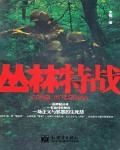Chapter 135: Fighting the Reinforcements
The continued blizzards and heavy fog undoubtedly created obstacles for the Soviet troops' offensive, but at the same time, the German defense also faced huge difficulties.
Within the 57th Army, there was an elite Siberian division transferred from the headquarters. These soldiers were equipped with ski equipment and goggles and had been fighting against severe cold, wind and snow all year round. They were obviously more adapted to fighting in such climatic conditions. They were the first troops to capture the Suguno railway station.
On the other hand, the Hungarians, who were fighting as a vassal state in cooperation with the German army, had obviously not yet fully adapted to the climate here. What was more serious was that the war of attrition in Stalingrad and the long front line had already dragged down the German army's logistics in the past few months.
Most of the Hungarian soldiers captured by the 57th Army had thin uniforms and did not have enough warm clothing. Many soldiers wore strange, boat-like boots, which were made by themselves, made of some kind of leather or cotton-padded clothes and trousers. Frostbite was common among the prisoners, and the injuries were mainly concentrated in the feet, hands, faces and some joints. Many people had lost their combat effectiveness before the battle began, and they could not even pull the trigger.
Within two hours of the launch of the battle, the 57th Army captured nearly 3,000 Hungarian soldiers in the isthmus area of the Lake Czaca Corridor. However, these soldiers had completely lost their dignity as soldiers and they were more like refugees.
Although the battle was going well, Yuri did not dare to relax at all. He knew very well that the elite German armored forces were not far away, watching him and his 57th Army with eager eyes. As an excellent commander, especially as a so-called heroic commander who had never lost a battle, the pressure on his shoulders was very great, because he had won too many honors before. Therefore, Yuri now had to accept more difficult tasks, and he could only succeed, not fail, otherwise many of his past honors would be far away from him.
The battle was launched in the early morning, and by daybreak, the 57th Army had successfully crossed the Volga River. It not only established several landing sites on the other side of the Volga River, but also advanced 15 kilometers into the German line, successfully liberating the Suguno area and cutting off the railway supply line of the German Ninth Army.
On the right wing of the 57th Army, the 51st Army was also making smooth progress. However, the problem was that the 4th Cavalry Group on the left wing of the 57th Army encountered stubborn resistance from the German defensive forces during the river crossing operation. By 10 a.m., it had not yet completed its goal of crossing the river.
Due to the delay of the 9th Cavalry Army, the offensive forces of the 57th and 51st Armies formed a salient within the German defense line that was nearly 12 kilometers wide and less than 20 kilometers deep. The left wing of the 57th Army was completely exposed and could be attacked by the German army at any time.
This incident made Yuri very angry. He made a special call to the front command to seek support from the left wing. The reply he received was that Comrades Zhukov and Vasilevsky had already gone to the 9th Cavalry Army and he believed that some adjustments would be made there.
The 9th Cavalry Army was not under the command of the Don Front, but was a combat sequence under the Stalingrad Front. As a result, the drawbacks of the coordinated operations of the three major fronts were also exposed, that is, it was difficult to coordinate the actions of the combat units that were not under the command of each other.
Affected by the slow progress of the 9th Cavalry Army, Yuri had to adjust the battle plan in order to avoid exposing the left wing of the troops to greater threats.
First, Yuri decided to move the army headquarters to Suguno, and build defensive positions along the railway with Suguno as the center to strengthen the defense to prevent the German army from launching an assault along the railway line toward Stalingrad.
Secondly, the deployment was adjusted, and a Siberian division that had originally participated in the attack was withdrawn from the north and deployed to the area between Lake Tsatsa and Suguno to strengthen the troops in that direction.
Finally, the offensive plan was adjusted. Yuri submitted a report to the front headquarters, clearly pointing out that without the support of the 9th Cavalry Army, the 57th Army would find it difficult to complete the operational goal of continuing the offensive against Sovietsky. In order to avoid the threat of the German army from the left wing, he planned to slow down the pace of the offensive and ordered the troops to occupy a defensive front of about 25 kilometers along the line of the Kervlenaya River, repel the Romanian 9th Army assembled in the area, and consolidate the defense of the area.
The report was submitted to the front headquarters on November 22, and received a reply on the second day, that is, at noon on November 23. To Yuri's disappointment, the front headquarters rejected his suggestion and asked the 57th Army to move north quickly and continue to advance in the direction of Sovietsky, cooperating with other army groups to encircle the German troops in the Stalingrad area from the southwest.
Along with this reply, there was also a suggestion from the headquarters to the front command. The content was Stalin's personal suggestion to remove Galanin, commander of the 24th Army, from his post because the 24th Army failed to achieve its combat objectives within the specified time during its attack on the east bank of the Don River.
Although Rokossovsky gave Galanin a second chance despite pressure from the headquarters and did not directly remove him from his post, this incident itself was a signal: the headquarters and Comrade Stalin attached great importance to this battle and would not allow anyone to make mistakes at this time.
Rokossovsky sent such a proposal from the headquarters to Yuri, and his attitude was very clear. At this time, no one could use any reason as an excuse to delay the previously formulated offensive plan.
His suggestion was rejected, and Yuri had to bear tremendous pressure and order his troops to continue attacking Sovietsky when the left wing was seriously threatened.
On November 23, the fourth day after the battle started, the vanguard of the 51st Army successfully captured Kalachi, the day after the capture of Sovetsky. On the same day, this Soviet army successfully joined forces with the 65th Army attacking from the south in Kalachi, and initially completed the encirclement of the German 9th Army.
Subsequently, in accordance with the deployment of the headquarters, the troops participating in the encirclement operation began to launch offensives in the southwest and southeast directions respectively. On the one hand, they compressed the German troops within the encirclement, and on the other hand, they forced the German troops outside the encirclement to stay as far away from Stalingrad as possible.
In addition, the headquarters also required the 21st, 24th, 62nd, 65th and 64th Army Groups in the encirclement to try to annihilate the German Ninth Army trapped in Stalingrad in the shortest possible time to complete the battle in the area, thereby having the opportunity to transfer more troops to the North Caucasus front and repeat the drama of the Battle of Stalingrad there.
The snowstorm that started on the 19th lasted on and off for nearly half a month. In the entire Stalingrad area, the temperature dropped sharply from minus ten degrees Celsius to minus thirty degrees Celsius. The snow in some areas was half a meter thick. Some tanks provided by the Americans were difficult to start in such weather conditions.
Perhaps due to the influence of bad weather, although the 9th Cavalry Army was unable to keep up with the pace of its advance, the 57th Army's left wing was completely exposed. However, the German infantry, mainly composed of vassal troops, assembled on the left wing, never launched an offensive, giving people the feeling that they were watching the 9th Army perish.
The battle within the encirclement had nothing to do with the 57th Army, and Yuri would not worry about what was happening there. After the encirclement was closed, he had been consolidating the existing defense line of the 57th Army, because he knew very well that the German troops outside were not sitting idly by and watching the demise of their 9th Army, they were just accumulating strength.
On December 9, Yuri received an urgent notice from the front command, stating that according to the intelligence department's investigation, the German 4th Armored Division and most of the Romanian 9th Army had completed their assembly in the Tormosin area. In the next few days, they would most likely launch an offensive along the railway line towards Kotelnikovo.
Taking into account that the 57th Army had no heavy firepower and was quite short of anti-tank weapons, the front command issued an order requiring the 2nd Guards Army to move south to strengthen the defense of the 57th Army's flank.
However, the mobilization of the 2nd Guards Army took time. In the following three days, the Soviet troops failed to arrive at the designated location on time, and on the 12th, the German attack was launched.
The 4th Panzer Group commanded by the famous German General Manstein was the elite of the German Army and was highly mechanized. Therefore, its offensive routes and logistical supplies also had high requirements for traffic conditions. With this in mind, it was not difficult to determine the offensive directions and routes it could choose.
However, in the Battle of Stalingrad, the 4th Army under this army group suffered serious damage. At the same time, most of the 48th Armored Army was surrounded in the city of Stalingrad. In fact, this army group was in name only.
In the previous assembly, the 4th Armored Group was supplemented with the 57th Armored Corps and two Romanian Corps. In the combat sequence of the 57th Armored Corps, the 6th Armored Division was just transferred from France. It was fully staffed, well-equipped, and the most threatening. Even more unfortunately, according to intelligence, the main offensive route of the 57th Army happened to be Yuri's 57th Army defense zone.
57vs57. Although the 17th and 23rd Armored Divisions under the 57th German Army had suffered serious damage in the previous war and were seriously understaffed, Yuri had no confidence in this defensive battle because his troops lacked effective anti-tank weapons.
It is unlikely to effectively stop the German attack on a certain line of defense. The best way to block the German 4th Armored Group outside Stalingrad is to exchange depth for victory, use tiered defense to coordinate with the threat of friendly forces on the flanks, and gradually disintegrate and weaken the German army's assault capability.



